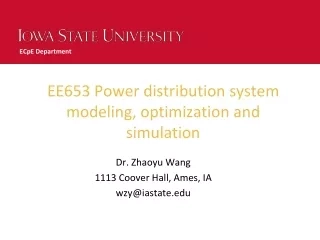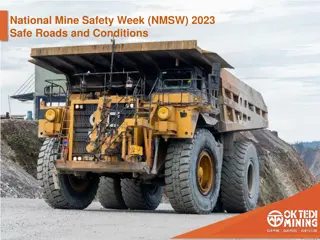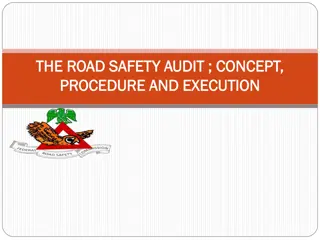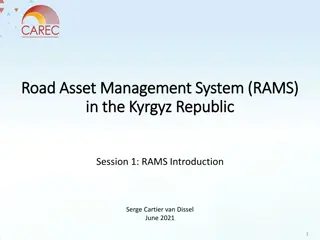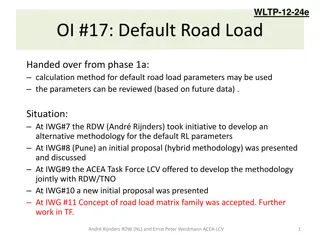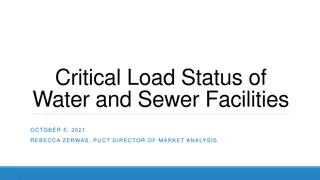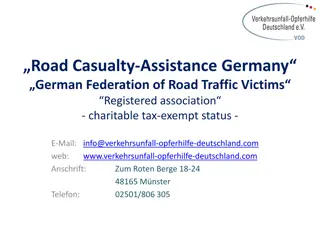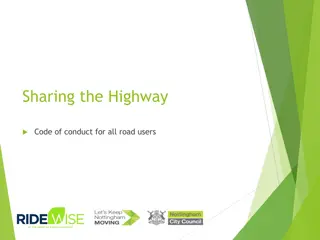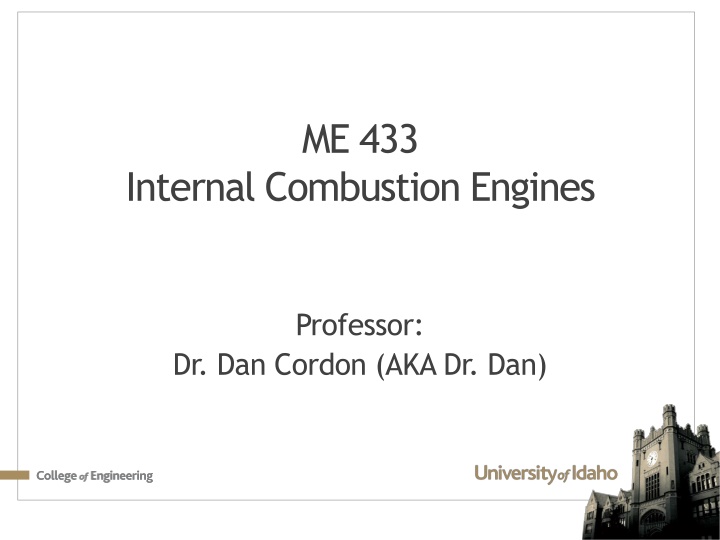
Dr. Dan Cordon: Internal Combustion Engines & Road Load Modeling
Learn about internal combustion engines and road load modeling in this comprehensive guide by Dr. Dan Cordon, including equations of motion, forces acting on vehicles, typical values for rolling and drag forces, and power requirements for different vehicles. Explore calculations for Honda Accord on Lewiston Grade and Toyota Supra on flat ground, as well as the relationship between torque, speed, and forces in acceleration models.
Uploaded on | 3 Views
Download Presentation

Please find below an Image/Link to download the presentation.
The content on the website is provided AS IS for your information and personal use only. It may not be sold, licensed, or shared on other websites without obtaining consent from the author. If you encounter any issues during the download, it is possible that the publisher has removed the file from their server.
You are allowed to download the files provided on this website for personal or commercial use, subject to the condition that they are used lawfully. All files are the property of their respective owners.
The content on the website is provided AS IS for your information and personal use only. It may not be sold, licensed, or shared on other websites without obtaining consent from the author.
E N D
Presentation Transcript
ME 433 Internal Combustion Engines Professor: Dr. Dan Cordon (AKA Dr. Dan)
Road Load Modeling We can use Equations of Motion (EOM) to model the steady-state power requirements or transient response of a vehicle. The key forces acting on a road-going vehicle are depicted in the figure below. Weight (gravity)
Forces against Direction of Travel Rolling Force ??= ?? ???????= ?? ? ? cos(?) Gravity Force ????? ?= ? ? sin(?) Drag Force ??= 0.5 ?? ???? ???????? ???2 Theta height ??? ? ???????? 100 % ????? = ??? ? ???????? sin ? =
Typical Values Rolling Force For most rubber-tire vehicles the coefficient of rolling resistance is: 0.008 < cR < 0.035 Drag Force For most vehicle shapes the coefficient of drag is: 0.3 < cD < 0.5 Frontal Area Bicycle and Rider Motorcycle and Rider Small Car Typical Sedan Typical SUV Semi Truck 0.3 0.5 [m2] 0.5 0.8 [m2] 1.6 2.0 [m2] 2.0 2.5 [m2] 2.7 3.5 [m2] ~9.5 [m2]
Power Required Road Power (steady-state) ?? ????? = ?????? ??? ?? ????? = (??+ ??+ ????? ?) ??? ?? ????? = 0.5 ?? ???? ???????? ???2+ ?? ? ? cos ? + ? ? sin ? ??? Calculate Honda Accord on Lewiston Grade AF = 1.86 [m2] cD = 0.32 and cR = 0.008 Weight = 3000 lbf = 13,345 [N] Rhoair = 1.2 [kg/m3] Speed = 65 [mph] = 29.1 [m/s] Theta = 3.7 [deg] Calculate Toyota Supra on Flat Ground AF = 2.23 [m2] cD = 0.38 and cR = 0.01 Weight = 3415 lbf = 15,190 [N] Rhoair = 1.2 [kg/m3] Speed = 35 [mph] = 15.7 [m/s] Theta = 0
Forces = m*a Acceleration Model If you have a Torque and Speed at the engine you re just a few steps away from having a Force and Velocity at the wheels. Remember that for geartrains the gear ratio (either the radius ratio or number of teeth ratio) will act as a torque multiplier and a speed reducer. The velocity of the tire-road interface can be related to the tire radius and RPM of the tire. ?????????= ???????? 75 ???? 25 ???? ??????= ????? 25 ???? 75 ???? ???????? = ?????? 2? ??? ?? ????? = 0.5 ?? ???? ???????? ???2+ ?? ? ? cos ? + ? ? sin ? ???

